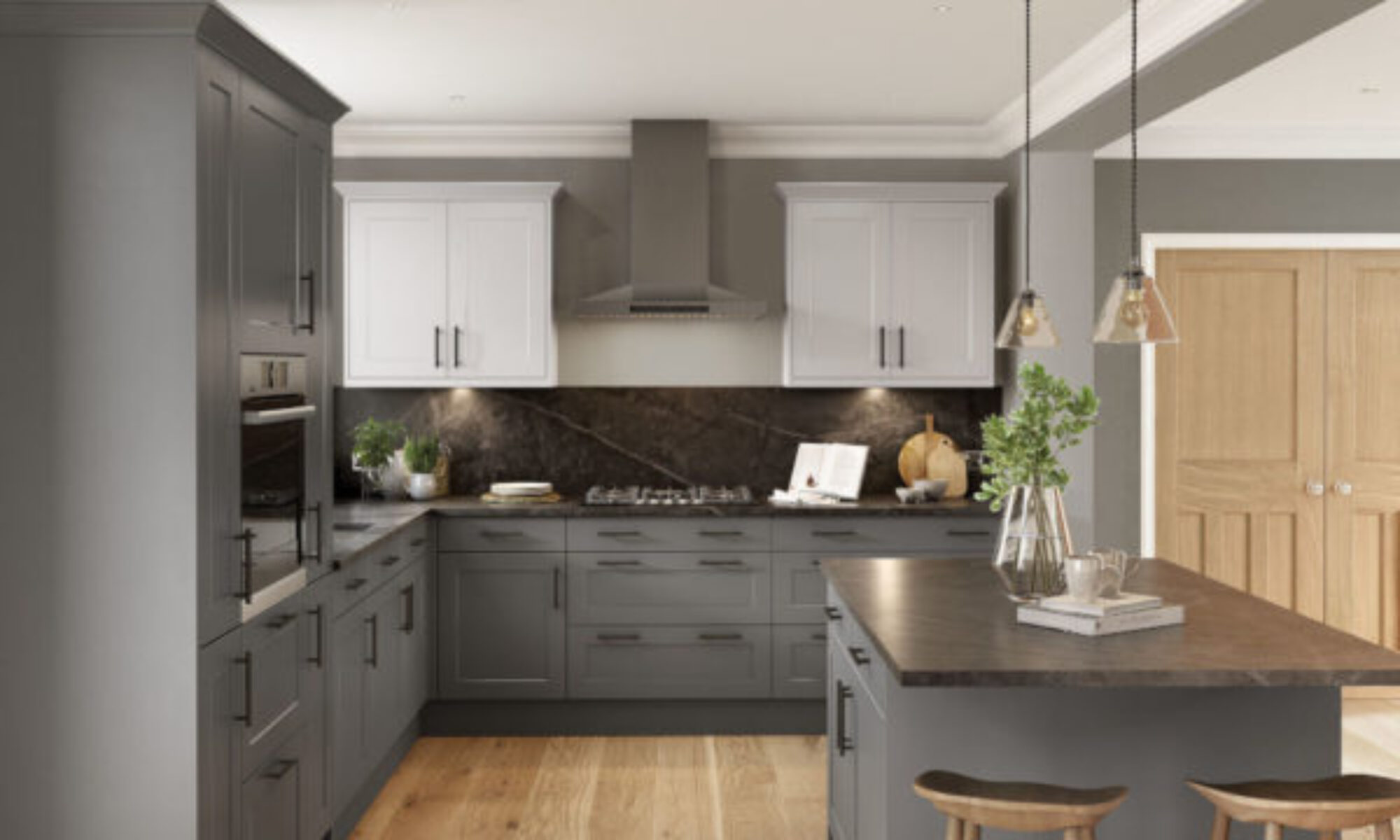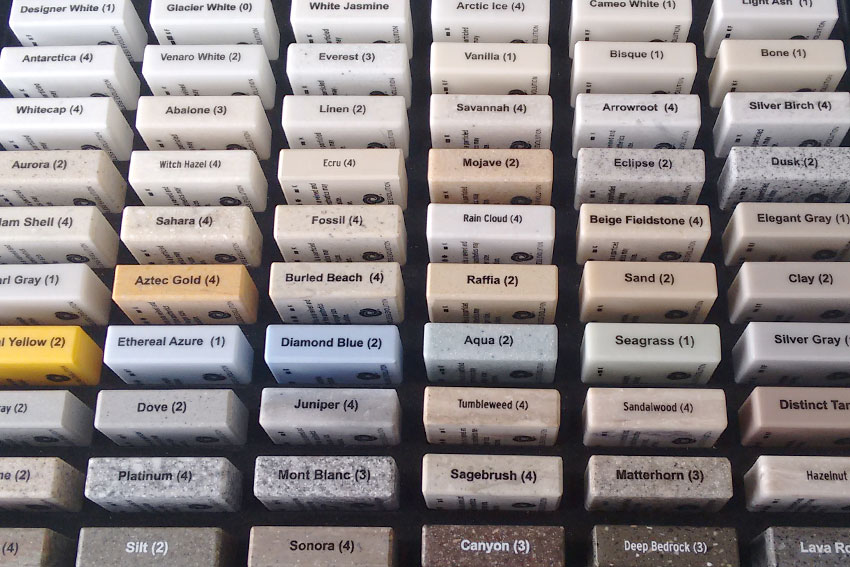Finding the Most Suitable Work Surface for Your Needs & Budget
When it comes to kitchen worktops, there’s more choice out there in the marketplace than ever before. With new materials being introduced, it’s hard to know which is right for you, so it can feel like a minefield.
As well as the basic decision making criteria such as budget and style, there’s also a number of practical concerns to take into consideration. Different surfaces offer varying benefits and pitfalls so you may be someone who is looking for a unique look, or you may be a keen cook who needs something robust and hardwearing. Perhaps you are cleanliness conscious and need a surface that is hygienic or you might just be someone who wants a great allrounder that ticks all the boxes.
Let’s take a look at the various kitchen surface options out there today and discuss their plusses and minuses in the decision making process.
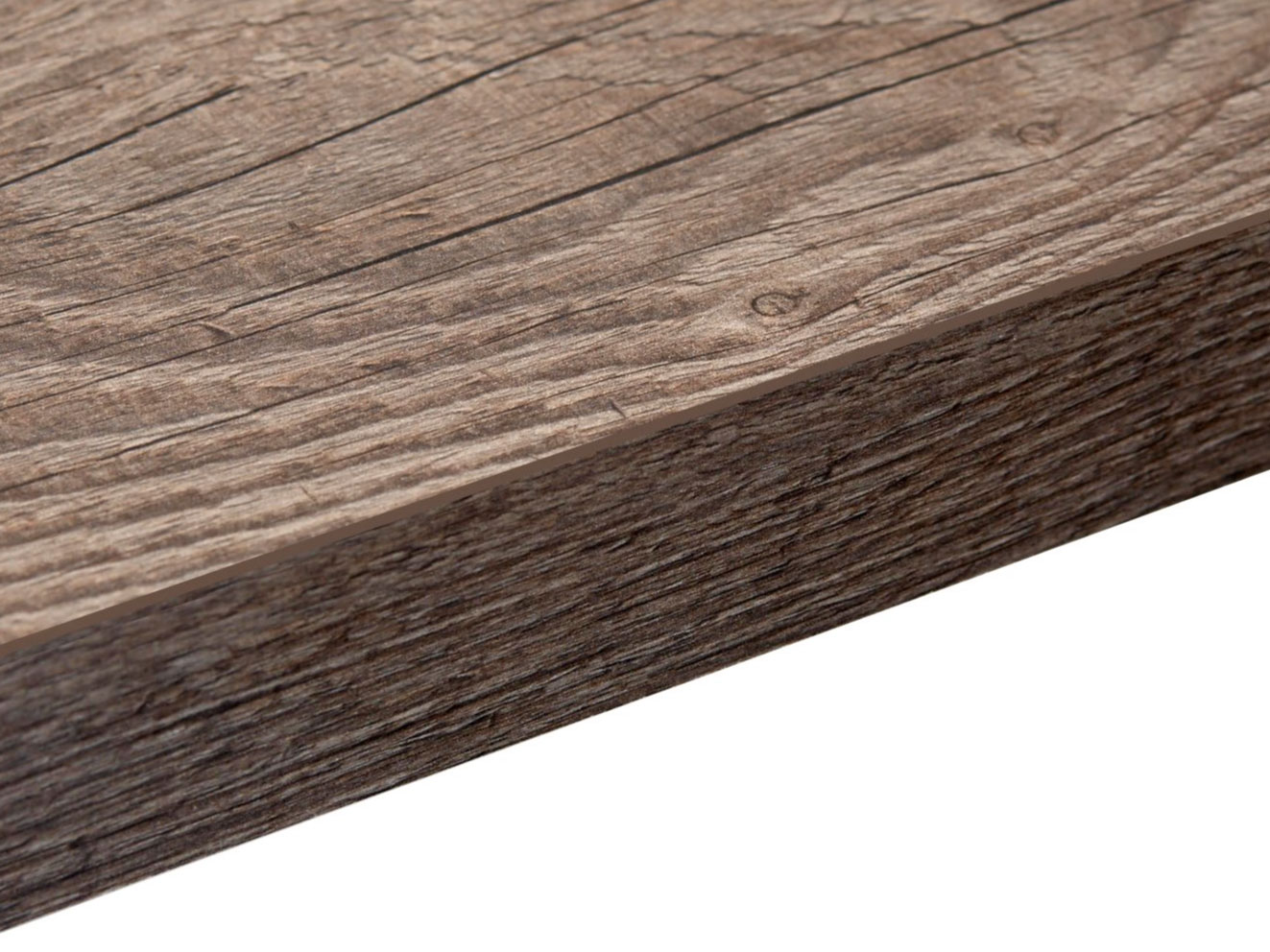
Laminate
To some, laminate is a no go as it has a stigma of being cheap and cheerful but in recent years, this ever popular work surface has come a long way. With much improved manufacturing techniques, a good quality laminate can mimic a much higher price tagged surface for a fraction of the cost.
Of course, it will never look as good as a real granite or wood surface but for those looking for an updated finish that doesn’t empty the coffers, it’s a great option.
Pros: as costs go, it’s right at the bottom end so it’s the most affordable option on the market. There’s a huge range of finishes available so the likelihood is, you’ll find one that you like that fits your style and needs.
Cons: durability is a persistent issue with chipping and split edging still a common problem and it is easily scratched or scorched by hot pots and pans. Joins also tend to be visible so require edging to compensate.
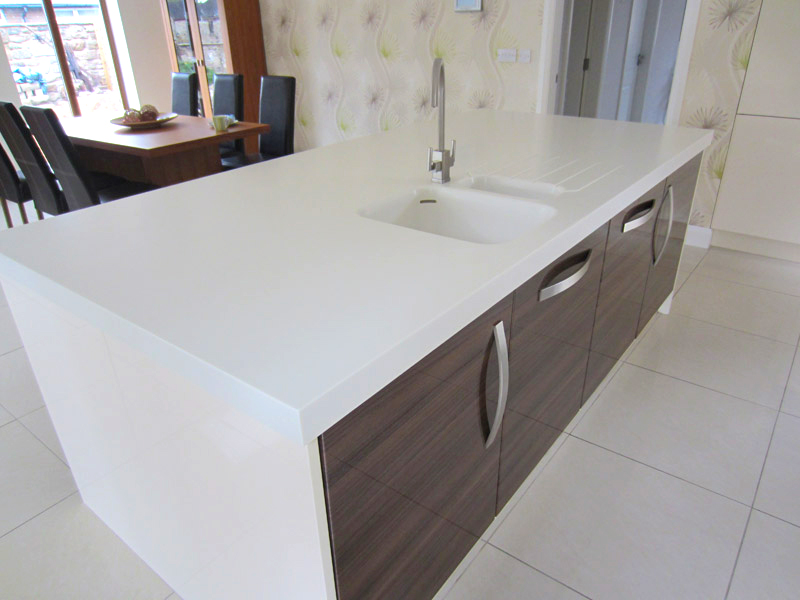
Solid Surface
Considered a much better upgrade to laminate, solid surface is a far more robust work surface that offers a much better finish and looks amazing. Composed of minerals and resins, this man-made material comes in a huge range of colours and finishes and will give any kitchen a dramatic makeover. Most solid surfaces boast a modern satin sheen to them, making them very much en vogue and with seams being virtually invisible, it gives a high end finish.
Pros: very easy to clean, is hygienic and hard wearing. Can be formed into practically any shape including sinks and upstands, making it a popular options for the most demanding of kitchen designs.
Cons: darker shades tend to show up scratches so lighter colours tend to be a more popular choice. Not great with heat and will damage easily if hot pans come into contact with it.

Solid Wood
Wooden worktops are timeless and exude a warm organic beauty that no other work surface can replicate. Ideally suited to a farmhouse or shaker style kitchen, wooden worktops last for several years and even if marked, add character to the look (within reason). Even if slightly damaged, can be sanded and retreated to bring it back to life so is the ideal choice for a kitchen that is going to be used and abused.
Pros: naturally antibacterial, easy to install and maintain. Looks beautiful if oiled and cared for regularly.
Cons: if left untreated for too long, can be susceptible to water damage and staining so ideally, needs oiling at least once or twice a year. Easily scorched by heat.
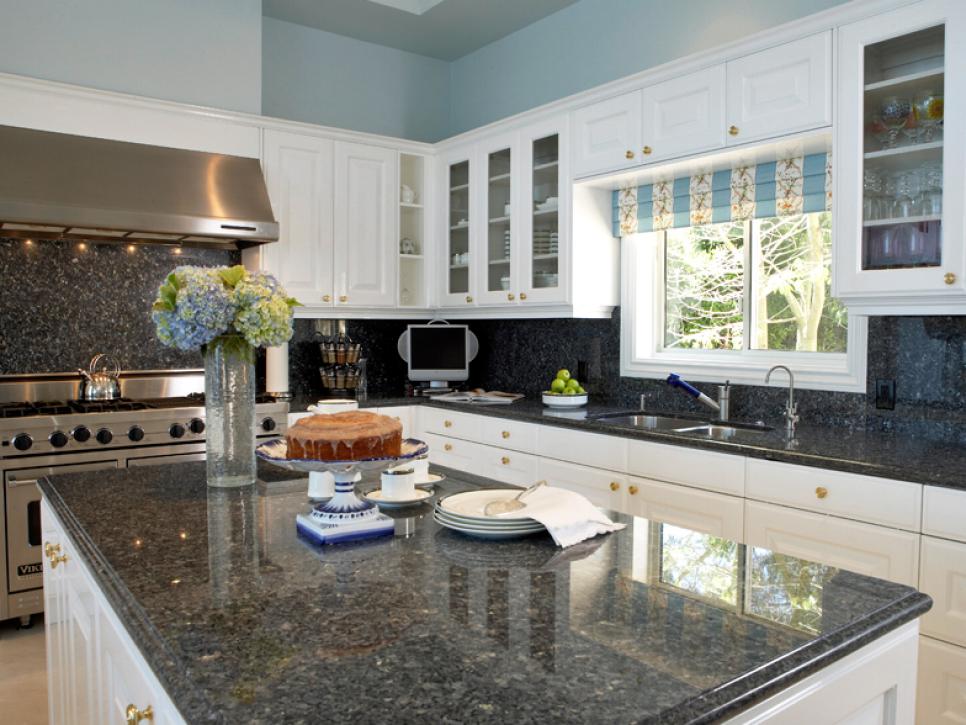
Granite
The most popular stone worktop option as it guarantees a high end finish every time. With the vast array of shades, grains and patterns that mother nature has to offer, this natural material will make a kitchen look fabulous whether modern or traditional. Whether you like bold patterns or subtle grains and sparkles, there;’s usually a granite out there to suit and due to it’s organic qualities, will be completely unique to your kitchen.
Pros: a tough surface that is less likely to damage due to heat than most other surfaces (although will damage if repeatedly exposed to very hot objects). Will give an incredible finish to any kitchen.
Cons: can be pricey but worth the extra investment. Is porous so must be sealed on day one and every six months thereafter to prevent water damage. Is extremely heavy so your cabinets must be strong enough to support it.
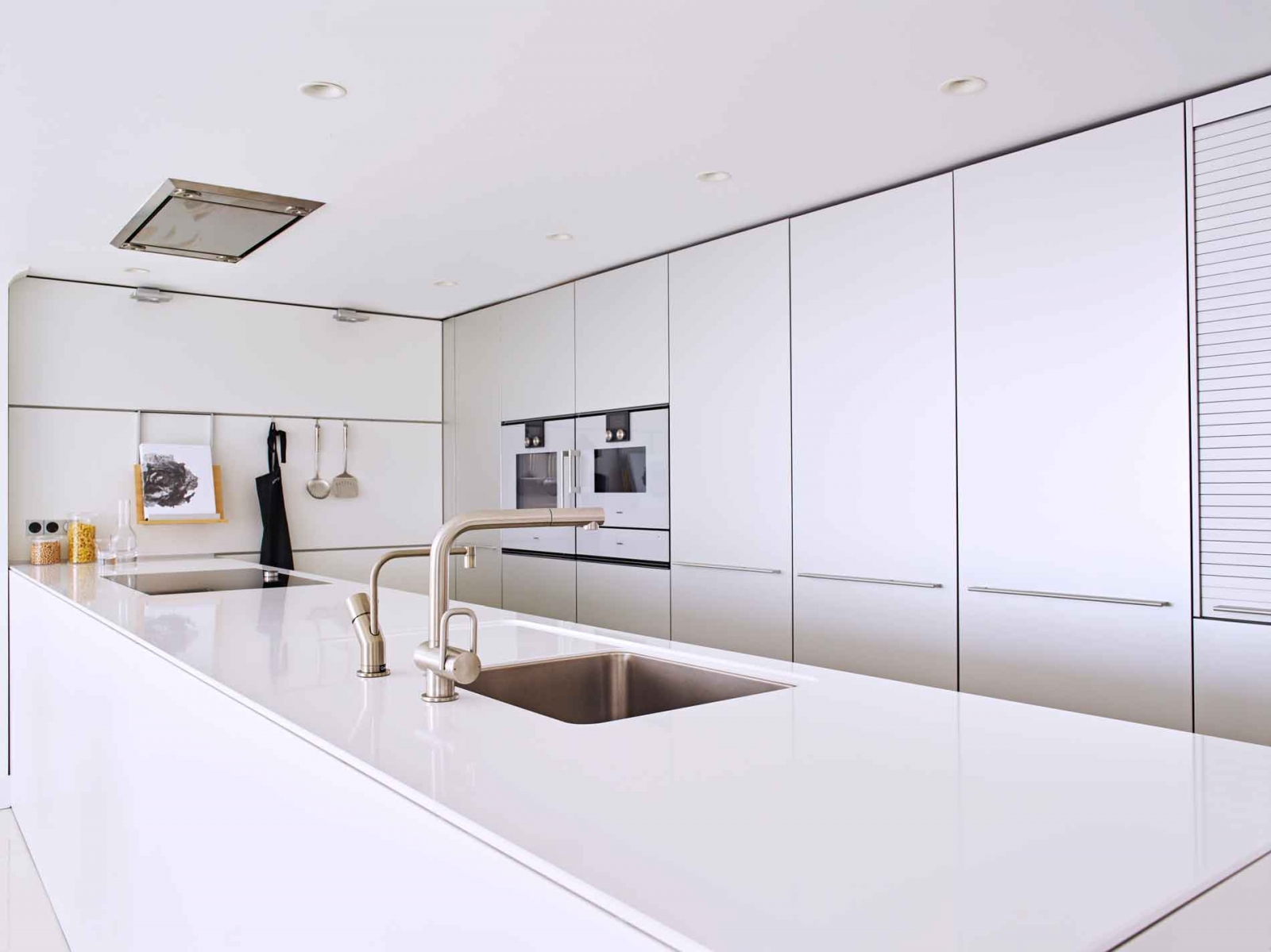
Quartz
Made from a combination of crushed quartz and resins, this engineered stone is a very popular alternative to granite. With its consistent finish available in a wide range of colours, quartz is a very hard material that doesn’t damage easily unless abused. Guaranteed to give a high end finish, seams are virtually invisible and is suitable to all styles of kitchen whether traditional or contemporary.
Pros: up to five times harder than granite, is non-porous and very low maintenance. No sealing required like granite.
Cons: does not tolerate heat well and will cause irreparable damage if exposed to hot pans.
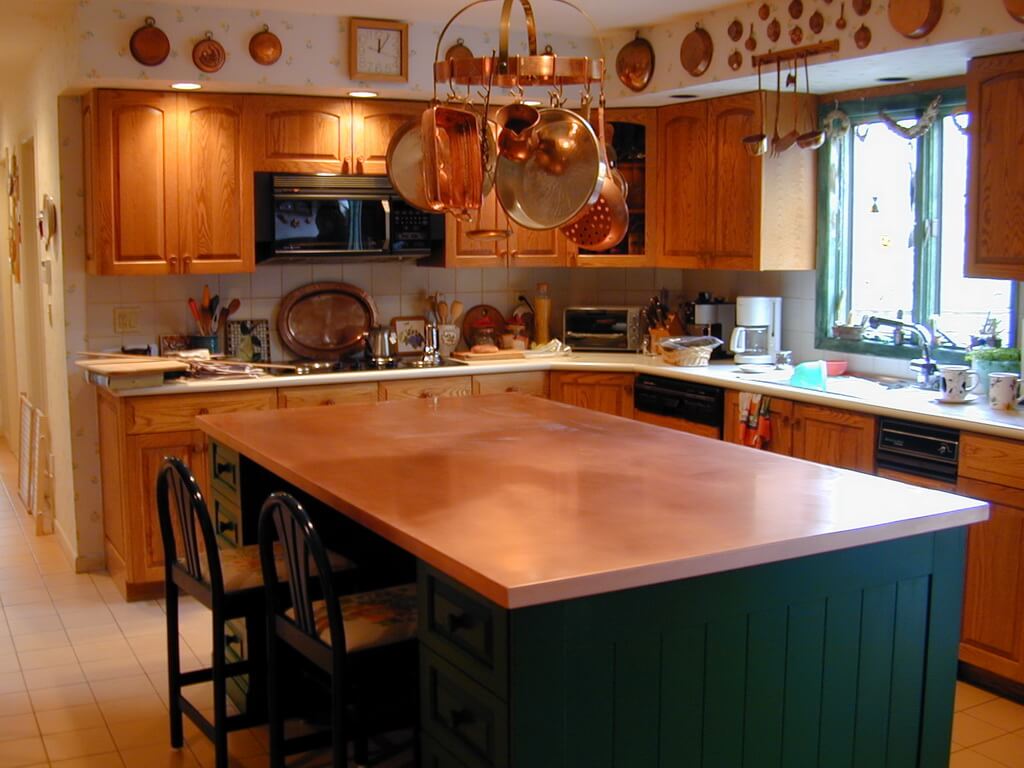
Metal
Due to an upsurge in home cooking enthusiasts, stainless steel and copper worktops have seen a huge rise in popularity. With the industrial look being very much in the now, these rugged, sleek work-surfaces are just the ticket offering an easy to clean surface that is hard wearing and very modern., Although they can scratch, imperfections do not look half as bad as they would on a solid surface or laminate worktop.
Pros: can be formed and wrapped onto any shaped. Hard wearing, non-pourous and easy to clean.
Cons: shows up scratches and marks very easily. Can dent if heavily abused.
